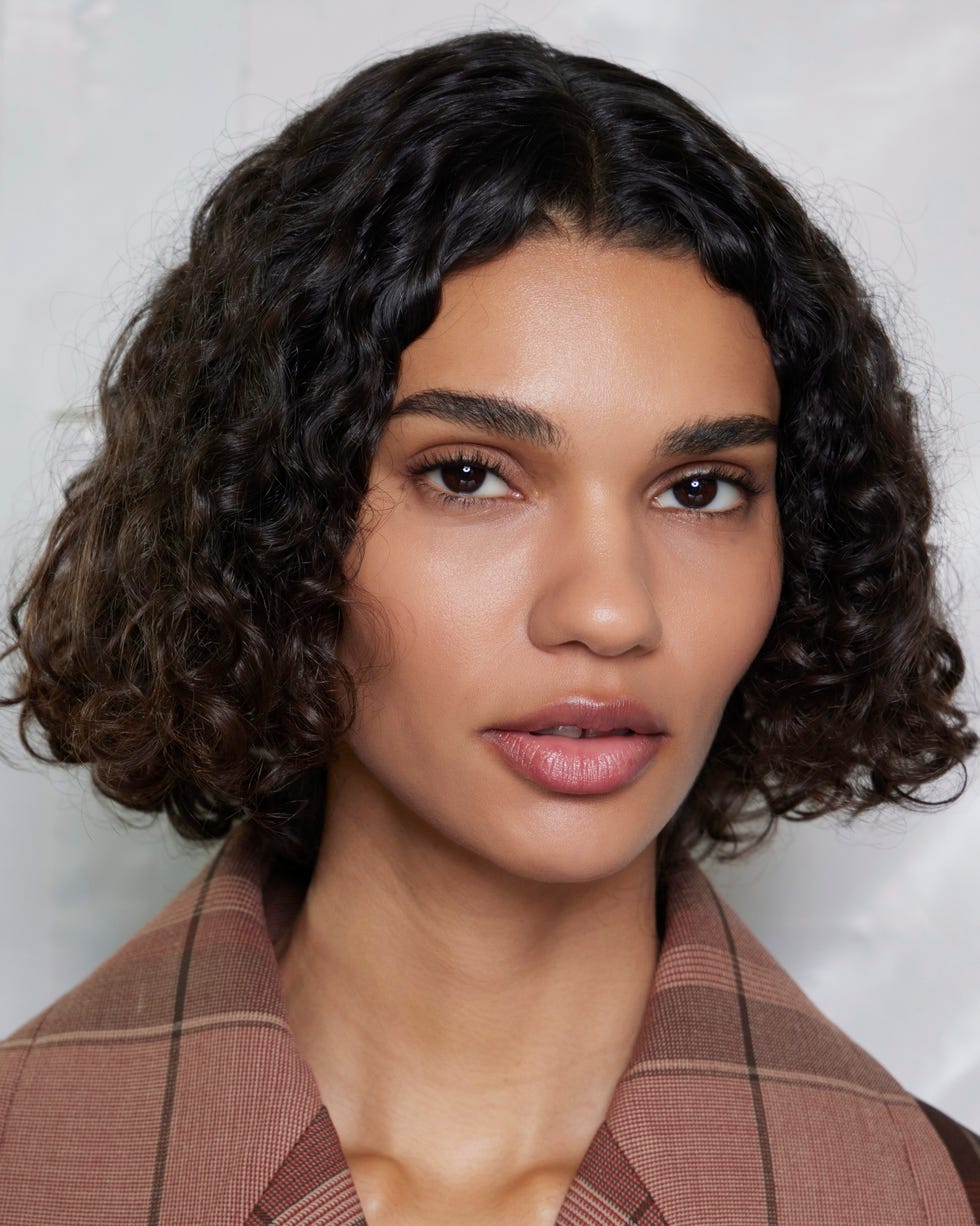
Understanding your hair type is essential for proper hair care and styling. Hair types are categorized based on the shape and structure of the hair strands. The four main hair types are straight, wavy, curly, and coily. Each hair type has unique characteristics and requires specific care and styling techniques.
Knowing your hair type is important because it helps you understand how your hair behaves and what it needs to stay healthy and beautiful. Hair types have different needs regarding moisture, styling products, and heat styling tools. You can tailor your hair care routine to meet your needs by understanding your hair type.
Straight Hair: Characteristics, Care, and Styling Tips

Straight hair is characterized by its smooth texture and lack of curl or wave. It tends to be shiny and reflects light easily. Straight hair can be fine or thick, but it is generally more prone to oiliness than other hair types.
When caring for straight hair, avoiding heavy products can weigh it down and make it look greasy is important. Use a lightweight shampoo and conditioner that won’t leave residue on the hair. Avoid over-washing your hair, as this can strip away natural oils and make it dry.
Styling straight hair is relatively easy because achieving a sleek look doesn’t require much effort. However, if you want to add volume or texture, you can use a volumizing mousse or texturizing spray. To protect your straight hair from heat damage, use a heat protectant spray before using any hot styling tools.
Wavy Hair: Characteristics, Care, and Styling Tips

Wavy hair falls somewhere between straight and curly hair. It has a slight S-shaped pattern and is thicker than straight hair. Wavy hair can range from loose waves to more defined curls.
Caring for wavy hair involves finding the right balance between moisture and control. Wavy hair tends to be prone to frizz, so it’s important to use a moisturizing shampoo and conditioner. Avoid using heavy products that can weigh down your waves and make them look limp.
Styling wavy hair can be fun because you can enhance your natural waves or create more defined curls. You can use a curl-enhancing mousse or gel to improve your locks and scrunch your hair while it’s damp. You can use a curling iron or hot rollers if you want more defined curls.
Curly Hair: Characteristics, Care, and Styling Tips

| Topic | Description |
|---|---|
| Curly Hair Type | There are three types of curly hair: loose, medium, and tight. Each type has its unique characteristics and requires different care and styling techniques. |
| Characteristics | Curly hair is prone to dryness, frizz, and tangles. It is also more fragile than straight hair and requires gentle handling. |
| Care Tips | Curly hair requires regular conditioning, deep conditioning treatments, and gentle detangling. It is also important to avoid heat styling and harsh chemicals. |
| Styling Tips | Curly hair can be styled in various ways, including wash-and-go, twist-outs, braid-outs, and more. It is important to use products that enhance curls and reduce frizz. |
| Product Recommendations | Some recommended products for curly hair include leave-in conditioners, curl-enhancing creams, and anti-frizz serums. |
Curly hair is characterized by its tight curls or coils. It tends to be dry and prone to frizz. Curly hair can range from loose curls to tight corkscrew curls.
Caring for curly hair involves keeping it moisturized and minimizing frizz. Use a moisturizing shampoo and conditioner specifically designed for curly hair. Avoid using products that contain sulfates, as they can strip away natural oils and dry out curls.
Styling curly hair requires some extra effort to define and control the curls. You can use a curl-enhancing cream or gel to define your curls and reduce frizz. Avoid brushing your curls when they’re dry, as this can cause them to become frizzy. Instead, use a wide-tooth comb or your fingers to detangle your hair when wet.
Coily Hair: Characteristics, Care, and Styling Tips

Coily hair is the tightest and most textured of all the hair types. It has a zigzag or spiral pattern and tends to be very dry. Coily hair can range from tight coils to kinky curls.
Caring for coily hair involves keeping it moisturized and preventing breakage. Use a moisturizing shampoo and conditioner specifically designed for coily hair. Deep conditioning treatments are also important for keeping your coils hydrated.
Styling coily hair can be challenging because it tends to shrink when it dries. You can do twist-outs or braid-outs to stretch your coils and add length. These techniques involve twisting or braiding your hair while it’s wet and allowing it to dry before unraveling the twists or braids.
Understanding Your Hair Type: How to Identify Your Hair Type
Identifying your hair type can be done using several different methods. One way is to simply observe the natural state of your hair. Look at the shape and pattern of your hair strands when they’re dry and untouched by styling products or tools.
Another method is the hair typing system developed by Andre Walker, Oprah Winfrey’s hairstylist. This system categorizes hair types into four main categories (straight, wavy, curly, and coily) and further divides them into subcategories based on the tightness of the curl or wave.
It’s also helpful to consider how your hair behaves in different conditions. For example, does it become frizzy in humid weather? Does it hold a curl easily? These observations can give you clues about your hair type.
Knowing your hair type is important because it helps you choose the right products and techniques for your needs. It allows you to create a customized hair care routine that addresses your hair’s unique characteristics and concerns.
Hair Texture vs Hair Type: What’s the Difference?
Hair texture refers to the thickness or diameter of individual hair strands, while hair type refers to the shape and structure of the hair strands. Hair texture can be fine, medium, or coarse, regardless of whether the hair is straight, wavy, curly, or coily.
Hair texture is determined by genetics and cannot be changed. It affects how your hair looks and feels and how it responds to styling products and techniques. Fine hair tends to be more fragile and prone to breakage, while coarse hair is more resistant to damage but can be more difficult to style.
Hair type, on the other hand, can be influenced by genetics and other factors, such as hormones and environmental conditions. It determines the natural shape and pattern of your hair strands. Understanding your hair type helps you choose the right products and techniques to enhance and maintain your natural texture.
Hair Porosity: What It Is and How It Affects Your Hair Type
Hair porosity refers to how well your hair can absorb and retain moisture. It is determined by the condition of the hair cuticle, which is the outermost layer of the hair strand. Hair porosity can be low, medium, or high.
Low porosity hair has a tightly closed cuticle, making it difficult for moisture to penetrate. This type of hair tends to repel water and products, making it prone to product buildup. It can also take longer to dry.
Medium porosity hair has a slightly raised cuticle that allows moisture to enter and exit the strand easily. This type of hair is considered healthy and easy to manage.
High porosity hair has a damaged or open cuticle that allows moisture to enter the strand but makes it difficult to retain moisture. This type of hair tends to be dry, frizzy, and prone to breakage.
Understanding your hair’s porosity level is important because it helps you choose the right products and techniques for your needs. For example, low-porosity hair benefits from lightweight products that won’t weigh it down, while high-porosity hair benefits from heavier products that help seal in moisture.
Hair Density: How to Determine Your Hair’s Thickness
Hair density refers to the number of individual hair strands on your scalp. It can be categorized as low, medium, or high. Hair density is determined by genetics and cannot be changed.
You can do a simple visual inspection to determine your hair’s density. Part your hair in the middle and examine how much of the scalp is visible. You likely have low hair density if you can see a lot of scalp. If you can see some scalp, you likely have medium hair density. You likely have high hair density if you can’t see much scalp.
Hair density affects how your hair looks and feels and how it responds to styling products and techniques. Low-density hair tends to look thin and may require volumizing products to create the appearance of fullness. High-density hair looks thick and may require more development to achieve the desired style.
Hair Type and Hair Products: Choosing the Right Products for Your Hair Type
Using products specifically formulated for your hair type is important because it helps address your hair’s unique needs and concerns. Here are some tips for choosing the right products for each hair type:
– Straight hair: Look for lightweight shampoos and conditioners that won’t weigh down your hair. Use a heat protectant spray before using hot styling tools to prevent heat damage.
– Wavy hair: Use moisturizing shampoos and conditioners to combat frizz. Look for curl-enhancing creams or gels to define your waves.
– Curly hair: Use moisturizing shampoos and conditioners specifically designed for curly hair. Look for products that contain ingredients like shea butter or coconut oil to hydrate your curls.
– Coily hair: Use moisturizing shampoos and conditioners that will help keep your coils hydrated. Look for products that contain ingredients like argan oil or jojoba oil to seal in moisture.
Understanding your hair type is essential for proper hair care and styling. Each hair type has unique characteristics and requires specific care and styling techniques. By knowing your hair type, you can tailor your hair care routine to meet its particular needs, resulting in healthier and more beautiful hair. Understanding your hair’s texture, porosity, and density can further enhance your hair care routine and help you choose the right products and techniques. So, take the time to identify your hair type and learn how to care for it properly. Your hair will thank you!